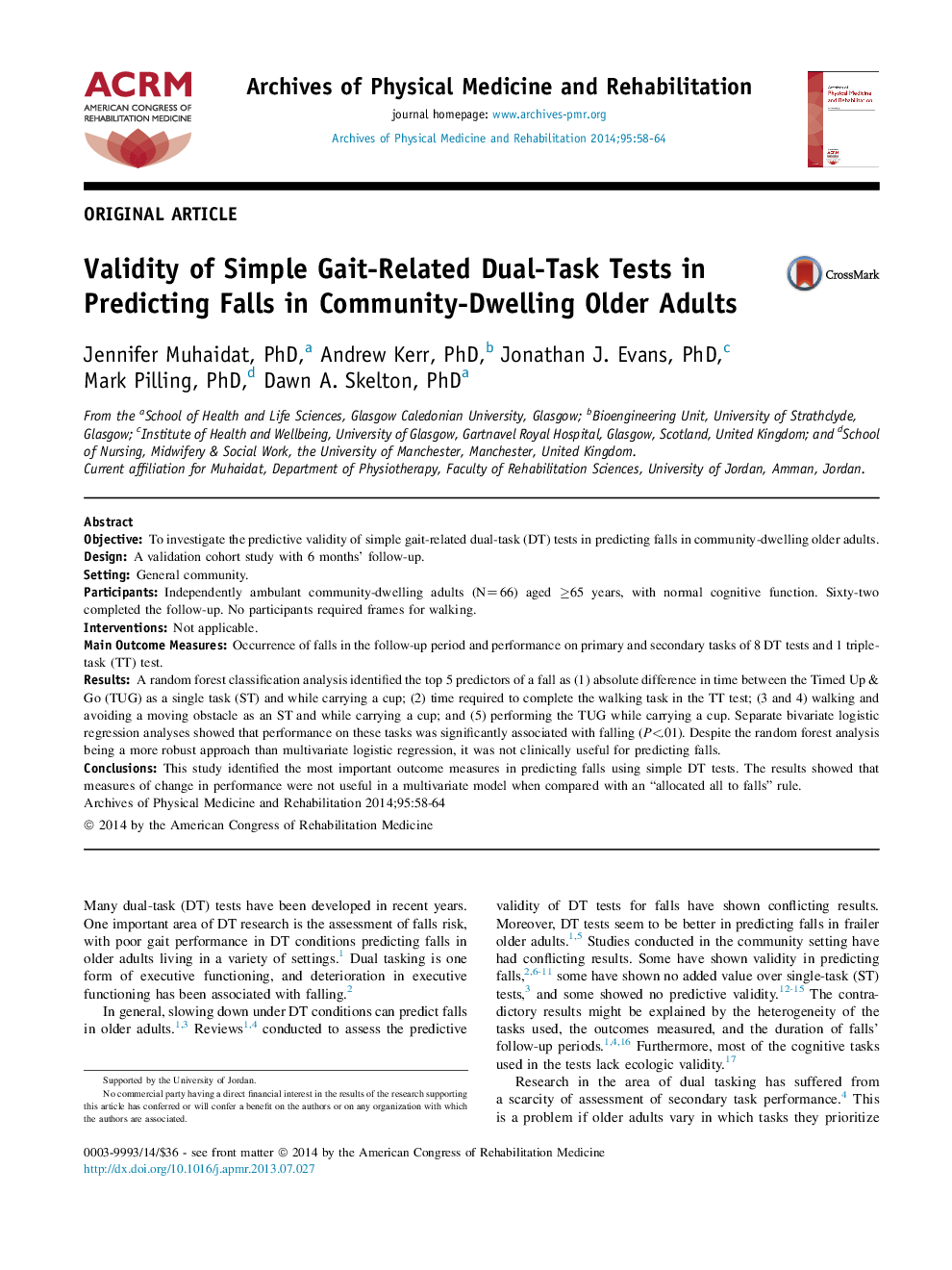| Article ID | Journal | Published Year | Pages | File Type |
|---|---|---|---|---|
| 3448528 | Archives of Physical Medicine and Rehabilitation | 2014 | 7 Pages |
ObjectiveTo investigate the predictive validity of simple gait-related dual-task (DT) tests in predicting falls in community-dwelling older adults.DesignA validation cohort study with 6 months' follow-up.SettingGeneral community.ParticipantsIndependently ambulant community-dwelling adults (N=66) aged ≥65 years, with normal cognitive function. Sixty-two completed the follow-up. No participants required frames for walking.InterventionsNot applicable.Main Outcome MeasuresOccurrence of falls in the follow-up period and performance on primary and secondary tasks of 8 DT tests and 1 triple-task (TT) test.ResultsA random forest classification analysis identified the top 5 predictors of a fall as (1) absolute difference in time between the Timed Up & Go (TUG) as a single task (ST) and while carrying a cup; (2) time required to complete the walking task in the TT test; (3 and 4) walking and avoiding a moving obstacle as an ST and while carrying a cup; and (5) performing the TUG while carrying a cup. Separate bivariate logistic regression analyses showed that performance on these tasks was significantly associated with falling (P<.01). Despite the random forest analysis being a more robust approach than multivariate logistic regression, it was not clinically useful for predicting falls.ConclusionsThis study identified the most important outcome measures in predicting falls using simple DT tests. The results showed that measures of change in performance were not useful in a multivariate model when compared with an “allocated all to falls” rule.
